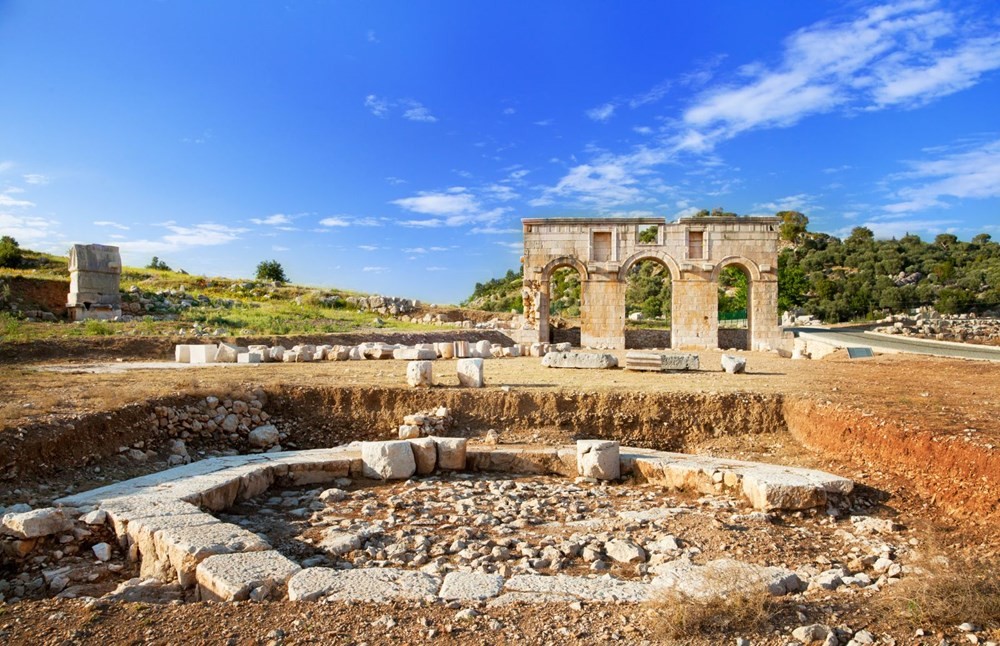Patara archaelogical site.
Patara Archaelogical Site
Gallery06 May 2020The Capital Of Lycian Union
Patara, the capital city of the Lycian Union, is referred as “Patar” in the Hittite texts of the 13th century BC. The ancient city of Patara, which has great historical and archaeological significance, survived for centuries because it was the only place to open to the sea in the Xanthos Valley. The city, which has been excavated since 1988, has a great significance for Christianity as well. Saint Nicholas known as "Santa Claus" was born in Patara. In addition, it is known that St. Paul took a boat from here to Rome. Patara was also famous as a port for storing and keeping the grains that were transported from Anatolia to Rome.
When Patara began to be controlled by the Seleukos Kingdom at the beginning of the 2nd century, it was accepted as the capital of Lycia. This position became official in 167 and 168 BC when Patara's autonomy against Rome and independence against Rhodes was gained by the city. The city, which didn’t lose its importance after the Roman rule, maintained its importance as a naval base in which the governors had their judicial affairs and as a connection with the eastern provinces.

One Of The Important Prophecy Centers
When Lycia became a province of Roman Empire in 43 AD and then when it was combined with Pamphylia and converted to a single state in 74 AD, Patara continued to be the capital city. Monumental structures of the Hellenistic period paralleled this process. After Rome, it had a reputation of Apollon prophecy center. During the Byzantine era, it became an important Center for Christians. Eudemos, was the Patara Bishop and the only authorized signatory of Lycia, in the First Council of Nicaea led by Emperor Constantine in 325 AD.
The entrance to the ancient city is through the magnificent and well-preserved Roman victory entrance. The inscriptions show that it was built in the name of the governor of the region around 100 AD. To the west of the entrance lies the Necropolis (ancient cemetery area) where Lycian sarcophagi are located. The theater leaning against the Kurşunlu Hill at the southernmost end of the city, was rebuilt in 147 AD after the earthquake. The other ruins of Kurşunlu Tepe, which is the most beautiful corner watch the scenery, are Vespasian Baths, Corinth Temple, the Main street and ancient harbor structures.
One of Patara's monumental buildings is the granary (Granarium) which was built by Emperor Hadrian and his wife Sabina in 2nd century AD. To the north of the theatre is the Parliament building, where Patara hosted meetings as capital. Waterways that bring water from a rocky area about 20 kilometers away from the city are also notable ruins.

While You Are Here
The ancient city of Patara is close to the route of the “Lycian Way” walk, but the magnificent beach right next to it is not to be missed. It is one of the most beautiful beaches in the Mediterranean and the beauty of the sandy beaches is unforgettable. This 18-kilometer beach is also one of the rare beaches of the Mediterranean sea turtles Caretta caretta nesting eggs for millions of years.
Kaynak: 1







